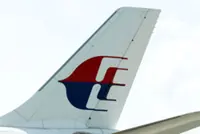NEW DELHI, Jan. 15 (Xinhua) -- Amid deteriorating air quality in the Indian capital, the federal government Wednesday reimposed stricter curbs under the Graded Response Action Plan (GRAP) Stage-IV in Delhi-National Capital Region (NCR).
The Commission for Air Quality Management (CAQM) in NCR and Adjoining Areas has decided to invoke all actions under Stage-III (severe air quality of Delhi) and also Stage-IV ('severe+' air quality of Delhi) of the extant schedule of GRAP, with immediate effect in addition to the Stage-I and II actions already in force.
"All actions of the GRAP schedule shall be implemented, monitored and reviewed by all the agencies concerned in the entire NCR to ensure that the Air Quality Index (AQI) levels do not slip further. All implementing agencies shall keep strict vigil and intensify measures of the GRAP schedule. Citizens are requested to strictly adhere to the citizen charter under GRAP," reads an order issued by CAQM.
In its order, the CAQM noted that the AQI in Delhi, which was at 275 on Tuesday, rose sharply to 386 on Wednesday because of dense foggy conditions and low temperatures leading to "extremely low mixing height and ventilation coefficient for dispersion of pollutants."
It noted that the AQI had climbed to 396 at 6:00 p.m. local time and was likely to breach the 400 mark.
CAQM revoked Stage-III restrictions on Sunday after the AQI in Delhi improved due to rainfall.
The reimposition of the curbs in Delhi-NCR was put in place in accordance with the Supreme Court's directive issued in December 2024, mandating immediate escalation of GRAP measures if the air quality index surpasses critical thresholds.
Meanwhile, dense fog blanketed parts of the national capital on Wednesday morning, reducing visibility, Reports said six flights were diverted, more than 300 flights delayed and departures were briefly put on hold at the Delhi airport Wednesday morning as low visibility conditions significantly impacted operations.
Delhi figures in the most polluted cities of the world.
Industrial activities and vehicular traffic are significant contributors to air pollution in the city, along with rampant construction.






































